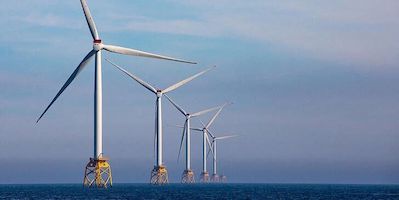By Mark McSherry
SSE plc, the Perth-based electricity infrastructure giant, unveiled plans on Wednesday that could see it invest up to £40 billion over the next decade as it ramps up its deployment of renewable energy.
In doing so, SSE said it will be creating more than 1,000 new green jobs every year. SSE is the biggest listed company run from Scotland and the firm supports about 40,000 jobs in the UK.
The investment plan came as SSE published its financial results, posting an adjusted pre-tax profit of £2.18 billion for the year ended March 31, 2023, up from £1.16 billion a year earlier, boosted by high energy prices and strong renewable power generation.
SSE’s revenue rose about 44% to £12.49 billion from £8.7 billion. Full year dividend will rise 13% to 96.7p per share.
The FTSE 100 company turned in a reported pre-tax loss for the year of £205.6 million compared with a pre-tax profit of £3.48 billion in the prior year “mainly driven by a net £2.3bn adverse fair value movement on derivatives …”
SSE reported a record £2.8 billion of capital expenditure and investment in 2022-23.
SSE guided to adjusted earnings per share (EPS) of more than 150p for 2023-24, with capital expenditure and investment expected to exceed 2022-23.
SSE plc CEO Alistair Phillips-Davies said: “Action, not just ambition, is what is needed to provide lasting solutions to the problems of climate change, energy affordability and security – and, with a record-breaking investment programme, that is what we are delivering.
“Through delivery of our societally-aligned strategy we are accelerating the build-out of renewables, reinforcing the networks needed to decarbonise, providing much-needed flexible generation, and working hard to ensure no-one is left behind in the transition to net zero.
“The results that we have reported today are profits with a purpose. We are creating value for all of our stakeholders and our investments exceed our earnings.
“On the back of our strong financial performance in the year, the resilience of SSE’s balanced business mix and underlying finances, the pace of strategic delivery and the wealth of opportunities coming our way, we have updated our Net Zero Acceleration Programme (NZAP) that we announced 18 months ago.
“The ‘NZAP Plus’ raises the bar on our ambitions to 2027, and provides a solid platform for growth that could see us invest up to £40bn over the next decade.
“The energy landscape is changing fast, and the macroeconomic and geopolitical environment has its challenges, but these are exciting times for SSE and we have both the financial footing and capabilities to go after high quality growth opportunities that will create value for years to come.”
REACTION:
Aarin Chiekrie, equity analyst at Hargreaves Lansdown: “SSE’s networks deliver electricity across Scotland and Southern England. This is classic utility territory – with revenues and profits closely regulated.
“SSE’s announced it’s staying the course with its pivot towards renewable energy. Turbo-charging efforts to renewables is a bold and admirable move. But the shift to renewables comes with a hefty dose of risk — they’re not always reliable.
“To some degree, it’s at the mercy of mother nature. That reality hit home last year as unseasonably calm and dry weather left the group’s renewable output lower than planned, meaning flexible gas-fired plants had to plug the energy shortfall.
“Fortunately, these are still part of SSE’s offering and helped to majorly boost profits – allowing the group to surpass its recently upgraded earnings per share (EPS) guidance.
“However, in a bid to free up cash to fund the renewables investment, SSE reiterated its plans to slash its dividend down from 96.7 to 60p next year. Investors reacted positively, with the shares showing small gains in early trading.
“As we move towards a net-zero world, the need for investment in renewables and networks is clear, and SSE’s ahead of the pack in this regard.
“But the transition will be costly, and it’ll likely be a long road until renewables can generate cash more reliably, which adds a layer of risk to SSE in the near-to-medium term.”
